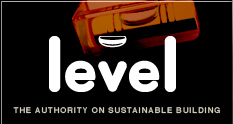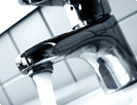Water
Water use, sustainability, and efficiency by choosing quality systems and materials, and providing environmentally friendly solutions.
Water supply
Design a safe water supply system that meets building users’ requirements while also making efficient use of water, energy and materials.
All habitable buildings must have a water supply that is potable(drinkable). That water supply must be protected from contamination, and must not contaminate the water supply system or source.
As part of that water supply system, the building must provide appropriate facilities for personal hygiene, and washing utensils, and hot water that is safe and will not cause scalding.
All water must discharge to a wastewater system to safeguard people from illness and protect them from odours and waste matter.
Code requirements
The water supply must be installed in accordance with NZ Building Code Clause G12 Water supplies, or AS/NZS 3500.1.2021 Plumbing and drainage – Water services and AS/NZS 3500.4:2021 Plumbing and drainage Part 4: Heated water services.
The 2021 versions of AS/NZS 3500 are the ones now used for demonstrating compliance with the Building Code. MBIE cited the 2021 edition of the standard in Acceptable Solutions in November 2023 with a 12-month transition period ending in November 2024. For water supply there is a new Acceptable Solution, G12/AS3.
Other relevant Building Code clauses include G1 Personal hygiene, G2 Laundering, and G3 Food preparation and prevention of contamination.
Water use
A recent survey of water use in New Zealand (reported in BRANZ Study Report SR469) found that the median daily water use was:
- in winter, 159 litres per person and 435 litres per household
- in summer, 231 litres per person and 504 litres per househol
Water metering is now present in more than half of all New Zealand homes. Less than 10% of surveyed households had a rain tank of any size.
Sustainability considerations
While the first consideration in designing a water supply system is the building occupiers’ health and safety, it is good practice to design systems that support efficient and sustainable use of water, energy and materials.
By designing, building and renovating homes that use water efficiently, you can help to keep costs down, and benefit the environment by, for example, reducing the need to draw more water from rivers and waterways, reducing demand for energy, and reducing the need to build new infrastructure for supply and disposal.
There are sustainability considerations in most aspects of water supply, including decisions about the sources of water, location and layout of pipework and storage, materials used, heating methods, and appliances and fixtures specified.
As well as ensuring the building owner is aware of the impact of their behaviour, water use can be minimised by controlling water pressure, ensuring the hot water system is efficient, controlling the amount of water used for toilet flushing, reducing water flow from outlets, specifying efficient appliances, and minimising outdoor water use.
Addressing the problem of water supply and hot water systems leaks in existing houses is also important. The 2015 BRANZ House Condition Survey, involving over 500 randomly-selected houses, found leaking taps or shower heads in 7.5% of owner-occupied bathrooms and 5.6% of rental bathrooms. The numbers can be extrapolated to 147,000 houses across New Zealand. A leak of just 10 drips per minute from a single source is a loss of 3 litres per day or 90 litres per month.
Updated: 02 November 2023


